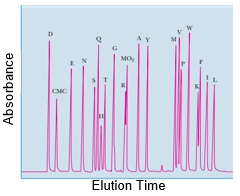High Performance Liquid Chromatography (HPLC) is a sophisticated technique used for separating molecules in a column through the application of high pressure and resolution. This method utilizes automated computerized instrumentation, which enhances the effectiveness of molecular separation. The core of HPLC's efficiency lies in its high-resolution column, which provides numerous interaction sites with the stationary phase. The increased number of interaction sites allows for greater resolving power, as molecules experience more interactions that slow them down as they travel through the column.
Despite the slowing effect of these interactions, the high pressure applied within the column accelerates the overall separation process, resulting in rapid and effective separation of various molecules. This combination of high resolution and speed makes HPLC the preferred method for separating a wide range of substances, establishing it as the gold standard in analytical chemistry.
However, the reliance on advanced automated systems makes HPLC a costly technique, which can limit its accessibility to certain research laboratories. Within the realm of HPLC, there are two primary types: normal phase HPLC and reverse phase HPLC. Each type has its specific applications and methodologies, which will be explored further in subsequent discussions.


